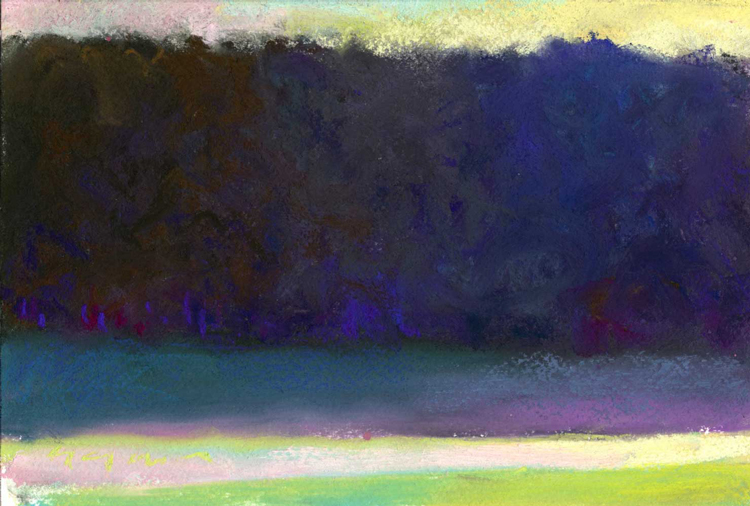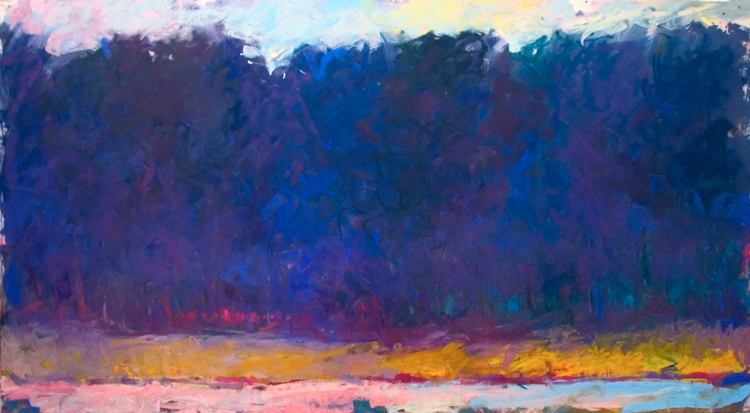Art history legend has it that Monet was once painting a landscape somewhere in a public park near Paris, when a woman who had been observing the great master paint, finally gathered enough courage to approach him and ask “Why have you used all those colors in painting the grass? I don’t see any of those colors in the landscape.”Monet, looked at her, at his painting, at the landscape, smiled and said: “Ah, yes Madam, but don’t you wish you did.”
– Excerpt from an essay by F. Lennox Campello– Lou Gagnon, Pastels, 2005.

Little did I realize, at the time, how prescient this quote would be and how many times over the years I’d be asked “Do you really see blue trees?”
Rewind to the late 1990’s and I’m siting in the ‘Capital Authorization’ meeting for Mission: Space. Picture a conference room with 30 people and a single table with enough room for all. The walls around the room are filled with stunning renderings, architecture & engineering documents, guest & operations diagrams, story boards and sample boards (reference material). On the table there are two documents; the ‘deck’ (a verbal description of the goals) and the ‘estimate’. After the presentation the only documents referred to are the ones on the ‘table’. Those two documents were treated as fact and all the stuff on the wall was fiction.
The stuff on the table was every bit a work of fiction as the deck was really a ‘Proposal’ and the ‘Estimate’ was really a budget. What’s remarkable is that those ‘table’ documents were only there to facilitate what was on the walls. The guests don’t care what you intended to do or couldn’t afford!
Language and math are important. Yet we all get most of our information visually in the form of signs, television, websites, ads and symbols. What happens if you can’t decipher what you’re seeing the way you can a paragraph or and equation?
The term ‘Visual Literacy’ is thrown around a lot. In the art education world it means the ability to see/read meaning. My question is how does one ‘see’ meaning in a language without the alphabet, vocabulary and grammar to approach it? This is what happened in that meeting and happens daily in our media. The inability to ‘read’ all of what was on the wall caused a retreat to what could be read.
“We don’t rise to the level of our expectations, we fall to the level of our training.”
– Archilochus
Most of the future posts will be about the grammar and vocabulary of visual literacy along with some funny anecdotes and lessons learned as a professional artist, art instructor and juror. There will be plenty of perceptual psychology, cognitive science and some math.
So, do I really see blue trees? Well, yes and no. I’ll defer to Emerson for now and hope you’ll come back for the answer.

“People only see what they are prepared to see.”
– Ralph Waldo Emerson
